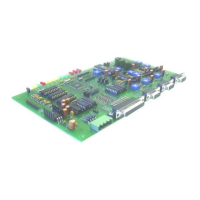6
All parameters of the controller can be remotely programmed using DTMF. Timers, control codes, port configuration and
messages can all be changed at the whim of the repeater owner. All the command codes may be programmed to your own,
special and unique code. This makes the RC210 very easy to incorporate into existing systems without users having to relearn
code structures. All parameters are stored in non-volatile EEPROM, so your settings are retained even if the controller loses
power.
The controller's programming is protected from unauthorized access by the use of 3 different 5-digit secret passcodes - one
used for each port. Each port may be programmed independently without affecting the others.
The RC -210 represents all numbers in standard decimal notation. In other words, you don't need to worry about converting
programming parameters to hexadecimal notation before actually programming anything.
There are 7 buffered general-purpose digital outputs also provided that can be used to remotely control devices at the repeater.
Alternately these outputs can be programmed to perform other tasks. With the addition of simple external shift registers, these
can be expanded to 64 outputs.
The controller uses flash memory to store its operating program. Just plug your computer into the RC -210's programming port
and you can upload updates in minutes.
A Word About Identification
The RC210 provides an intelligent algorithm for ID sequences to minimize disruption to ongoing repeater communications, while
providing entertaining messages and meeting FCC requirements for repeater identification.
If the repeater has not been in use for a period of time and a new user keys the repeater, the controller will ID after he unkeys
with one of the three Initial ID messages (these messages automatically rotate). This message could say "Welcome" followed by
the callsign, or some other such "friendly" message.
After the Initial ID is finished, the Pending ID timer starts to run. After it times out, it looks to see if any repeater activity has
occurred since the Initial ID played. If there has been activity and no user is currently talking, the Pending ID is played.
Otherwise, the controller waits for no user and then will send the Pending ID message.
Specifications
Microprocessor: Atmel ATMega128 RISC processor running at 16 Mhz
Program Memory: 128K Bytes - Flash EEPROM
Running Memory: 4K Bytes RAM, 4K Bytes EEPROM
Speech Method: ISD 4003 series VoiceCorder© IC
Logic Inputs: Low < .8 volts
High: 5 volts max
Analog Inputs: 0 - 5 vdc maximum
Logic Outputs: 90v @ 500 ma open collector
Audio Inputs: High impedance >10K
Audio Outputs: up to 6 volts p-p
Power Requirement: 11.5 to 15V dc @ 60 ma.
Operating Temp: -15 to +55 degrees C (5 to 150 degrees F)
Board size: 9.0 x 5.2 inches (9.0 x 5.4 inches including connectors)
Connectors: Phoenix 4 pin power connector (mating plug included with RC210)
DB-25 female for I/O and A/D. Radio ports are DB9 or RJ45

